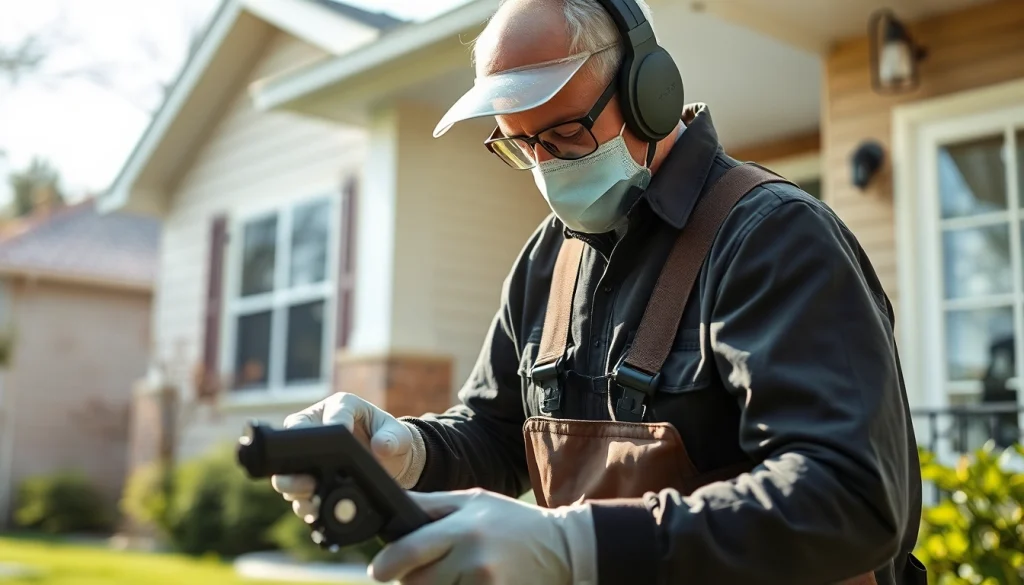Understanding Pest Control Services
Pest control services play a crucial role in maintaining healthy environments, whether at home or in businesses. Without proper pest management, infestations can lead to significant damages, health risks, and a decline in quality of life. Learning about pest control services, their importance, and their various strategies can help you make informed decisions to protect your spaces. If you’re interested in exploring comprehensive pest control services, keep reading to understand what to expect from professional pest management.
What Are Pest Control Services?
Pest control services encompass a range of techniques and methods aimed at managing and eliminating unwanted pests that can invade homes, offices, and other places of business. These pests can include insects like ants, roaches, termites, and rodents, among many others. Pest control services are typically provided by licensed companies that employ trained professionals who utilize various strategies, including chemical treatments, baiting systems, and integrated pest management (IPM) approaches.
The Importance of Pest Control
The significance of pest control cannot be understated. Here are some compelling reasons why investing in pest management is essential:
- Health Risks: Many pests can carry diseases that pose risks to human health, such as rodents spreading hantavirus and insects like mosquitoes transmitting West Nile virus. Regular pest control helps mitigate these health concerns.
- Property Damage: Pests such as termites can cause severe damage to the structure of a building, leading to costly repairs. Early intervention can save homeowners and businesses significant expenses.
- Quality of Life: Infestations can significantly impact comfort levels and overall quality of life. A pest-free environment is more enjoyable and less stressful.
Common Types of Pests Managed
Understanding the types of pests that can invade your space is essential in choosing the right pest control service. Here are some of the most common pests managed:
- Rodents: Mice and rats are notorious for invading homes and businesses, often looking for food, water, and shelter.
- Insects: Common insects include cockroaches, ants, bed bugs, and termites. Each species may require specific treatment methods.
- Wildlife: Animals such as raccoons, squirrels, and skunks can also invade properties, causing disruption and potential health hazards.
Choosing the Right Pest Control Services
With numerous pest control services available, it’s vital to choose one that best meets your needs. Here are critical factors to consider in your selection process.
Factors to Consider When Selecting a Provider
Consider these factors when looking for a pest control service:
- Expertise: Look for a company with a proven track record and experience in managing the specific pests you are dealing with.
- Licensing and Certifications: Verify that the pest control service holds the necessary licenses and follows regulatory guidelines.
- Tailored Solutions: Seek companies that provide customized pest management plans based on the unique needs of your property.
The Role of Certification and Experience
Certification in pest control treatments ensures that the technicians have undergone adequate training. An experienced pest control service is likely to have a better understanding of local pest behaviors and control strategies. This can lead to more effective eradication methods and reduce the risk of recurrence.
Evaluating Customer Reviews and Testimonials
One of the best ways to gauge the effectiveness of a pest control company is by reading reviews and testimonials from previous clients. Look for reviews that highlight:
- Success in pest eradication
- Quality of customer service
- Timeliness and professionalism of the service
The Process of Pest Control
Understanding the process that professional pest control services follow can provide you with insights into what to expect and how to cooperate with the technicians for optimum results.
Initial Inspection and Assessment
The pest control process usually starts with an initial inspection. During this assessment, the technicians will:
- Identify the type of pests present.
- Determine the extent of the infestation.
- Examine potential entry points and conducive conditions that might have led to the infestation.
Implementation of Control Strategies
Once the inspection is complete, the pest control company will develop a tailored treatment plan. This may include:
- Chemical Treatments: Using pesticides to eliminate pests.
- Biological Control: Utilizing natural predators or parasites to control pest populations.
- Physical Barriers: Installing traps or barriers to prevent pests from entering the premises.
Post-Service Follow-Up and Prevention Measures
After the initial pest control services, follow-up is essential to ensure the success of the treatment. Post-service measures might include:
- Regular monitoring inspections to catch any resurgence.
- Recommendations for maintenance practices that can help prevent future infestations.
- Continued education on pest behavior and best practices for property maintenance.
Coping with Different Pest Issues
Different environments may pose unique pest challenges. Here is how to cope with varying pest issues.
Residential vs. Commercial Pest Control Services
The necessity of pest control services varies between residential and commercial settings:
- Residential Services: Focus on common home pests and aim to provide a comfortable living environment for families.
- Commercial Services: Target various pests that may impact health and safety regulations, customer satisfaction, and property compliance.
Seasonal Pest Challenges and Solutions
Pest concerns often change with the seasons:
- Spring/Summer: Insect populations typically rise, making it the prime time for treatments against ants and mosquitoes.
- Fall/Winter: Rodents may seek shelter indoors as temperatures drop, necessitating proactive measures to prevent entry.
Eco-Friendly Pest Control Options
As awareness of environmental issues grows, many pest control companies now offer eco-friendly alternatives. Strategies include the use of biodegradable products, natural repellents, and integrated pest management techniques that minimize chemical use while effectively controlling pests.
Measuring the Effectiveness of Pest Control Services
Measuring the outcomes of pest control services is critical to ensure successful management. Here are key components to consider in evaluating effectiveness.
Key Metrics for Success
Important metrics include:
- Reduction of Pest Activity: Monitoring the decline in pest sightings or activity. A significant decrease indicates successful treatment.
- Customer Satisfaction: Feedback from clients post-treatment can provide valuable insights into the pest control service’s effectiveness and quality.
Importance of Regular Monitoring
Regular monitoring provides an ongoing evaluation of pest control effectiveness. It ensures that any resurgence of pests is detected early and addressed promptly, which is crucial for preventing larger infestations.
Client Feedback and Service Improvements
Gathering client feedback is not only essential for service improvements but also helps pest control companies build trust and refine their practices based on what works best for their clientele.





